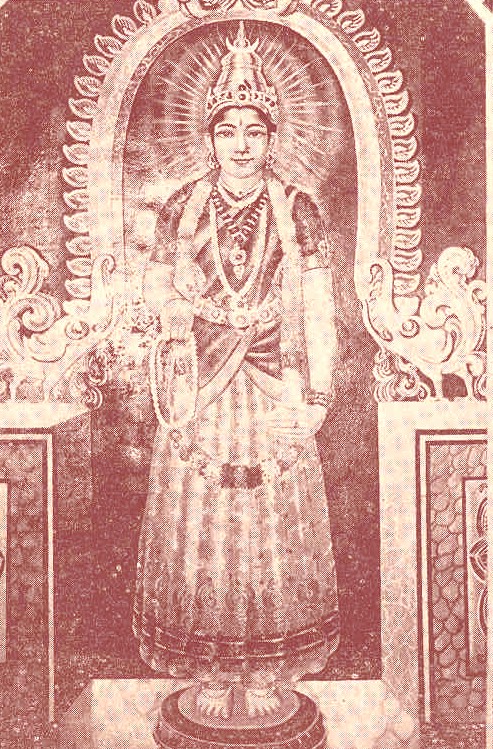Kanyakumari is located at the
southern tip of the Indian subcontinent. The small temple dedicated to Kanyakumari,
or the youthful form of the primeval energy Shakti (Mother Goddess) is
located on the seashore, in the town known by the same name. Kanyakumari was referred to
by the British as Cape Commorin.

Kanyakumari represents the site where
the spiritual leader Swami Vivekananda spent days in meditation upon a
rock off of the coast. A memorial built in his honor is accessible via ferry. There is
also a recently built memorial to Tiruvalluvar, the author of the
philosophical work Tirukkural - a treatise on the Indian way of life.
The Kanyakumari temple is an ancient one and has been
mentioned in the Ramayana, Mahabharata, and the Sangam works Manimekalai and
Puranaanooru. It is believed that the image of Kanyakumari was installed and
worshipped by Parasurama, who is credited with reclaiming Kerala from the ocean, and building several shrines.
Legend has it that the demon Baanaasuran
wreaked havoc on the inhabitants of this world, and that Mahavishnu requested the Gods and
the humans to request primeval energy Paraasakthi to vanquish the demon.
Answering the prayers of the oppressed, Shakti appeared as a young virgin girl at
Kanyakumari and commenced penance with the desire of marrying Shiva at Suchindram.
Legend has it that the celestial Sage
Narada, fixed the midnight hour as the auspicious time for the wedding.
When Shiva's procession reached a site by name Vazhukkumpaarai, a rooster crowed,
hearlding daybreak, and that Shiva assuming that the auspicious hour was past, returned to
Suchindram. The disappointed Goddess decided to spend her life in Kanyakumari
as a virgin, and that all the food prepared for the wedding was laid waste and that it
turned into the colored sand seen on the southern shores of the subcontinent.
The demon Banaasuran upon hearing of
Shakti's story proceeded to Kanyakumari to win her hand in marriage by force, and this led
to a fierce battle in which he was slain by her.
The temple: The black stone image of
Kanyakumari in the sanctum bearing a garland is an enchanting one. Of particular
significance is the glittering nose ring that is visible from a distance. Legend has it
that the light emanating from this nose ring misguided arriving ships and caused them to
crash onto the rocky coast. There is a door now, to the east of the shrine which is opened
only five times a year. There are also shrines to Vijayasundari and Balasundari,
friends and playmates of the Goddess in her youthful form. There are a total of 11
theerthams associated with the temple in the ocean surrounding the area. The confluence of
the seas, at the southern tip of the subcontinent has been held sacred for centuries.

Festivals: Worship services are
carried out here, throughout the day, in a manner similar to that in Keralite temples. It
must be remembered that Kanyakaumari was a part of the erstwhile Travancore kingdom.
The Vaisakha festival is celebrated
in the tamil month of Vaikasi where an image of the goddess is taken around town in
procession on various mounts. The car festival, the Aaraatu (when the eastern door to the
shrine is opened) and the float festival here are of significance.
The eastern door is opened also on new moon days in
the months of Thai, Aadi (Capricorn and Cancer), during Navaratri and in the month of
Kaartikai.
The Kalabham (sandal) festival in the
month of Aadi is also of importance here, when the image is covered with sandal paste, and
on the 13th day, ie. the last Friday of the month, vast crowds throng the temple as the
image is covered with vast quantities of flowers brought in from several villages in the
vicinity.
An image of the deity is held in worship at the Navaratri
mandapam throughout the duration of Navaratri, and processions mark the festive
celebrations on each of the nine nights.
The destruction of Baanasuran is
enacted on Vijaya Dasami, the concluding day of the Navaratri festival, where an image of
the deity is taken in procession on a horse mount to a nearby village - Mahadanapuram.
See also:
Tirunelveli
Kutraalam
Tiruvanandapuram
